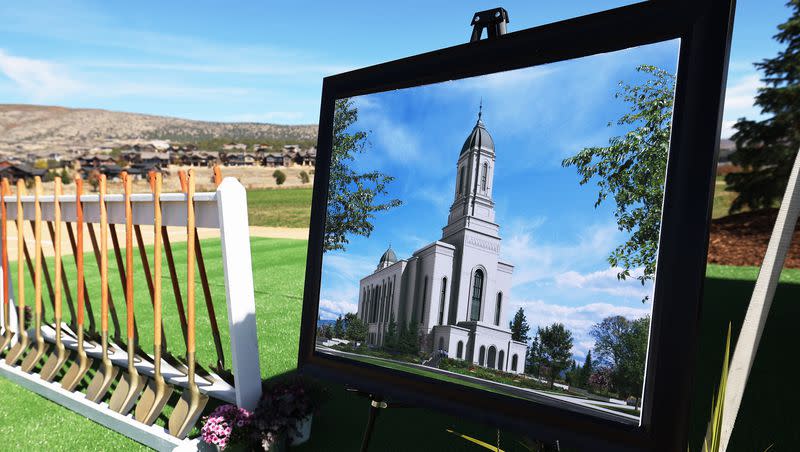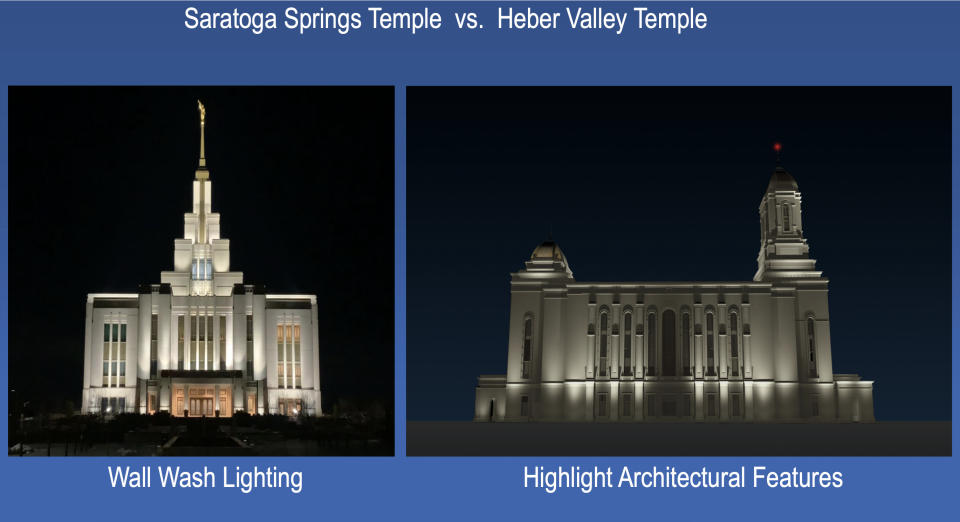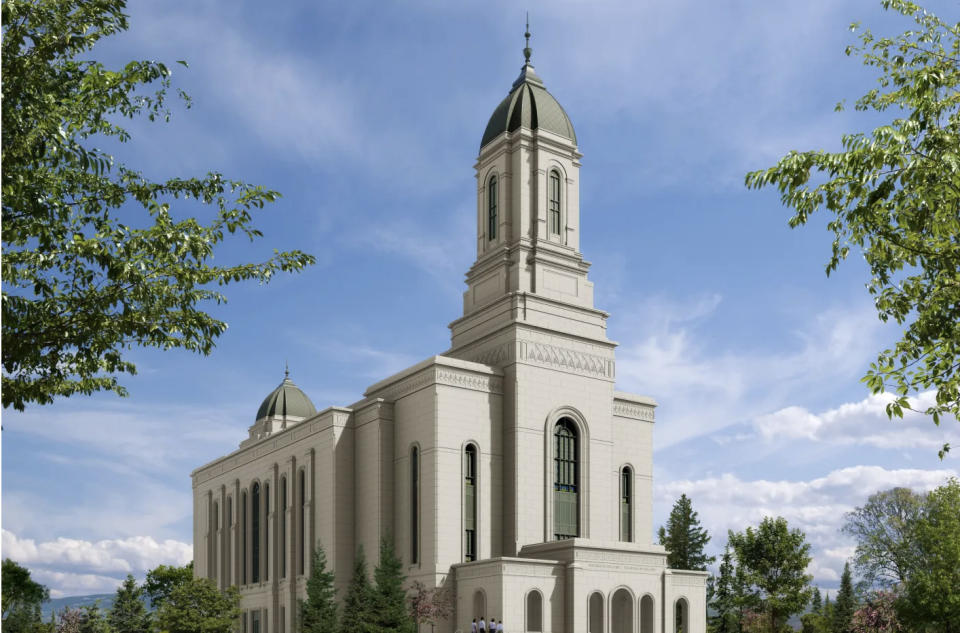Heber Valley Utah Temple approved. See why the church agreed to dim the lighting

The outdoor lighting at the proposed Heber Valley Utah Temple won’t be as bright as originally planned, but the lights will turn on after a unanimous late night vote Wednesday by the Wasatch County Council.
The council gave final approval for the temple after a contentious public hearing in which a minority group renewed its request for an alternate temple site and called on council members to recuse themselves if they were members of The Church of Jesus Christ of Latter-day Saints.
Near the end of an almost five-hour meeting, the council chairperson said that request was offensive.
The temple will be built in a residential setting at about 1400 E. Center Street on the border of Heber City and unincorporated Wasatch County land.
With 600 people in attendance and more participating by Zoom, a church representative told the council that church leaders and architects made numerous concessions on exterior lighting after opponents said they wanted to protect the rural county’s dark skies.
“The Heber Valley Utah Temple will be one of the dimmest temples in the world,” said Curtis Miner, an architect with Core Architecture, the principal architect on the project for the church.
Related
The church said it would:
Agree to turn off all outdoor lighting every night at 11.
Minimize light on the surfaces of the exterior walls instead of using the normal practice of “wall wash” lighting that makes many temples beacons of light at night.
Change the color and texture of the exterior stone to reduce light refracting.
Reduce the color lighting temperature from 4000 Kelvin to 3000 Kelvin.
Add a static red light to the 210-foot west tower to protect air traffic from the Heber Valley Airport.
Miner showed images of the new Saratoga Springs Utah Temple beaming with wall wash lighting and a much dimmer rendering of the Heber Valley temple. The audience gasped audibly at the difference.

Dozens of people spoke during the public hearing. A majority spoke in support of the temple and its location. Those who spoke against were concerned the temple was too tall, too large, too bright and would generate too much traffic.
Several said they believed the council was too stacked with Latter-day Saints, and people on both sides and on the council expressed concern and sadness that the debate was dividing them.
One man went to the podium during the hearing and said, “If you are a card-carrying, tithing-paying member of the church, you are in conflict when it comes to voting on a contract between the county and the church.”
Another who commented by Zoom said the council members should be transparent and declare whether they were a church member.
The requests weren’t new, and Wasatch County deputy attorney Jon Woodard tried to address specific concerns raised previously by asking pointed questions of the council:
Have any of you been threatened by a leader of the church that your temple recommend, if any, would be revoked if you did not approve this application?
Have any of you been threatened by a leader of the church or another organization that your status with the organization would be changed if you did not approve or deny this application?
Have any of you been promised financial incentives or benefits for approving or denying this application?
He asked for a show of hands. None went up.
Hours later, after the public hearing, four council members said they were Latter-day Saints. The others did not say if they were or not.

Council Chairman Spencer Park said, “I am a member, and I do dislike the comments that I should recuse myself, because I got voted into office for who I am, and I’m a lot more things than a member (of the church). I do take offense to that.”
Park said the council had spent 10-12 months on the process and Steve Farrell, who has been on the council for 19 years, said the temple project was one of the most thoroughly researched items he’d seen.
Critics accused the council of violating the goal of the county’s general plan to maintain the valley’s rural atmosphere. But Woodard and the council said the general plan and Wasatch County code allows churches in any zoning district, including the residential-agricultural one where the temple will be built. It also excludes church towers from height requirements.
“No, this is not blowing off all the land-use requirements of the code ...,” Woodard said. “We’re following the rules in place to amend those requirements.”
The temple lighting also is well below the county and Heber City requirements, the council said.
The Wasatch County planning commission approved the project by votes of 6-1 and 5-2 after an equally long and contentious hearing on Oct. 25.
A church member who lended his voice to the opposition, Vaughn Hokanson, said he was disheartened by the divisiveness of the debate.
“I feel like the spirit of temples and the spirit of building temples should be community unifying instead of community dividing,” he said.
Temple supporters said they had prayed for a temple in the Heber Valley for decades. Two told stories of losing loved ones killed while driving through Provo Canyon to attend the Provo Temple.
Hokanson, who is running for Heber City Council, was among those who asked the church to move the temple to Red Ledges, a gated golf community. He conceded Woodard, the deputy attorney, had built a strong case that the council was legally justified to approve the temple project.
Aaron Barlow, who commented on Zoom, said he was a Harvard Business School alum and business executive who had worked for Fortune 500 companies.
“The audience opposed to this doesn’t appreciate how awesome this analysis has been,” he said. “It’s better analysis than we did to make decisions worth hundreds of millions of dollars, to make $1 billion decisions.”
The unanimous vote will go into effect in 15 days, when The Church of Jesus Christ of Latter-day Saints can begin the process to obtain permits to start construction.
The project combines two lots to build the temple on 18.17 acres. It will have a footprint of footprint of 26,089 square feet but because it has three floors, it will be a total of 87, 626 square feet.

